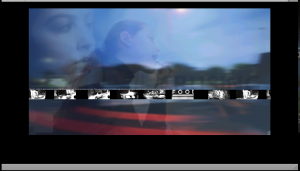Wrongness Theory: Or, When It Rains, It . . . Oh My God, Did You See the Size of That Squirrel?
We take a break from our scheduled examination of digital fiction to bring you these words from our sponsor, Discontent™.
We’ve all heard of Murphy’s Law, right? There are some variations in the wording, but the concept behind the law is that things go wrong frequently. Well, I recently did some research to figure out if there’s a different law, or maybe a corollary to Murphy’s Law, that describes how wrong things tend to congregate in groups (like teenagers who smoke), or, in other words, “when it rains, it pours.”
Unfortunately, I haven’t been able to find a name for such a situation. Finagle’s Law gets close. It states that “whatever can go wrong will go wrong, and at the worst possible time, in the worst possible way.” But it doesn’t state explicitly that wrong things pile up.
Home owners are surely familiar with this fact. It’s not just an issue of the plumbing leaking; it’s that your furnace also stops working that same week. And then all the lights in your house burn out simultaneously. And, no, it’s not because a leaky pipe is drenching your circuit breakers in water. It’s just that everything goes wrong at once.
I’ve written about this before, but this time, I decided to do some hard research rather than just complain about the squirrels we trapped in our attic, the soffit we had to get repaired, the inch of standing water we had in our basement, the five hours we spent vacuuming it up, or the huge electricity bill that will be coming this next month as a result of said vacuuming (with a 6 HP shop vac).
I’ve also decided to remain pessimistic, since, according to the Non-Reciprocal Law of Expectations, “Negative expectations yield negative results. Positive expectations yield negative results.”
Not that I won’t act. I got an estimate from a basement flooding guy, who’s coming on Thursday to install a sump pump. But I know that I can be assured of a couple other laws governing the repair project. First, there’s Parkinson’s Law, which states that “Work expands so as to fill the time available for its completion.” And coupled with the Ninety-Ninety Rule of Project Schedules, I can count on the job taking longer than expected since “the first 90% of the job takes 90% of the time, the last 10% takes the other 90%.” And I can also be sure that the job will result in other mandatory home improvement projects since Zymurgy’s First Law of Evolving System Dynamics is true: “Once you open a can of worms, the only way to re-can them is to use a larger can.”
Of course, the mere fact that I’m vocalizing any of my pessimistic predictions is problematic; the Unspeakable Law notes that “as soon as you mention something, if it’s good, it goes away; if it’s bad, it happens.”
And I’m also sure that somehow, most of this is my fault. Hanlon’s Razor, a corollary to Finagle’s Law, admonishes, “Never attribute to malice that which can be adequately explained by stupidity.” I’m definitely stupid when it comes to home ownership and repair. I mean, I heard those squirrels a month ago. The flooding has happened before (though never this bad). And I just don’t like paying lots of money unless I absolutely need to, so I’ve put off things like the soffit repair and an upgrade to our gutters and downspouts (which I’m probably going to add to the list of hired-out jobs soon).
Ultimately, though, it’s sad that I can’t refer to this whole series of unfortunate events with a less clichéd phrase than “when it rains, it pours.” Enlightened though I am by my research here, I have found “no answers, only cross-references” (that’s Wiener’s Law). Of all my options, though, Jenning’s Corollary might fit best: “The chance of the bread falling with the buttered side down is directly proportional to the cost of the carpet.”
I’ll let you know how much that carpet costs once I get an estimate.



